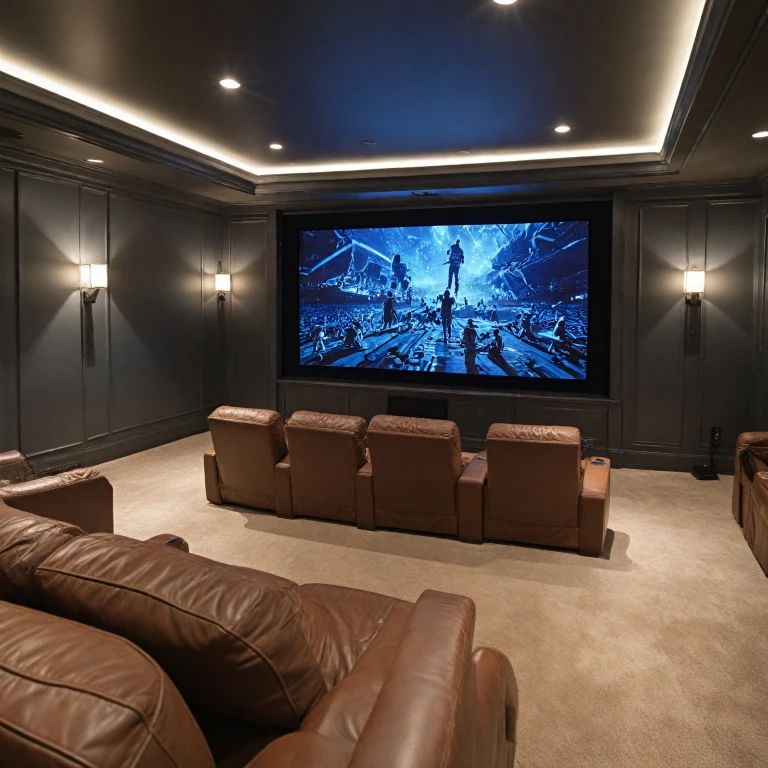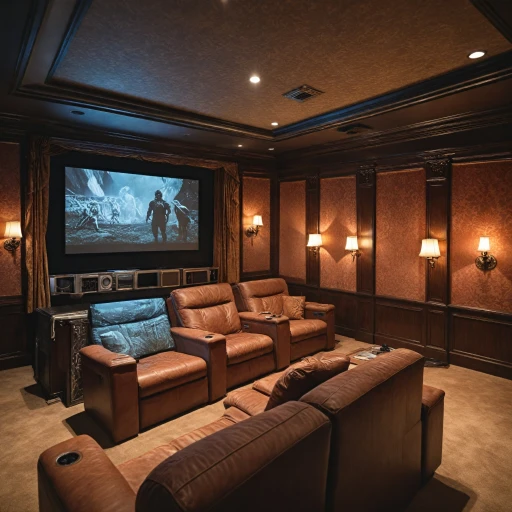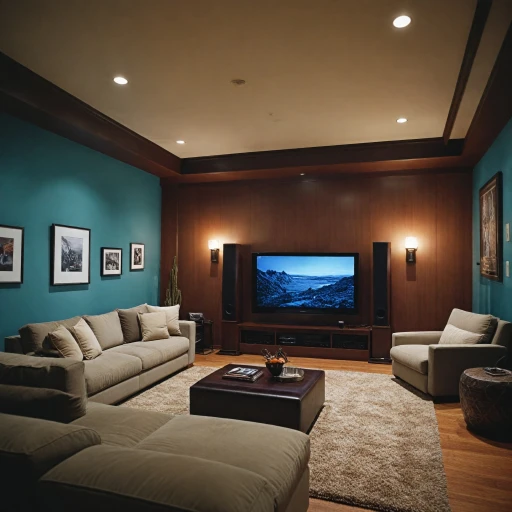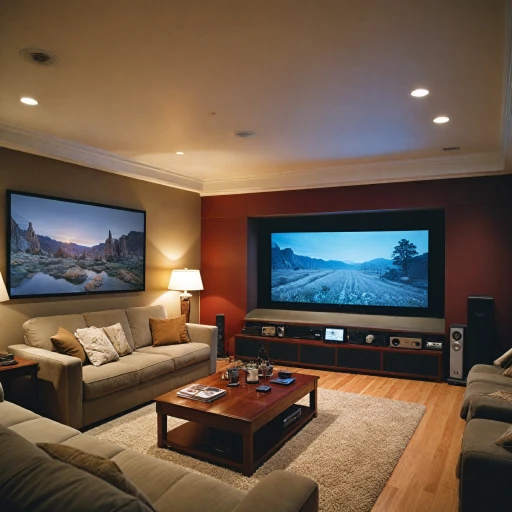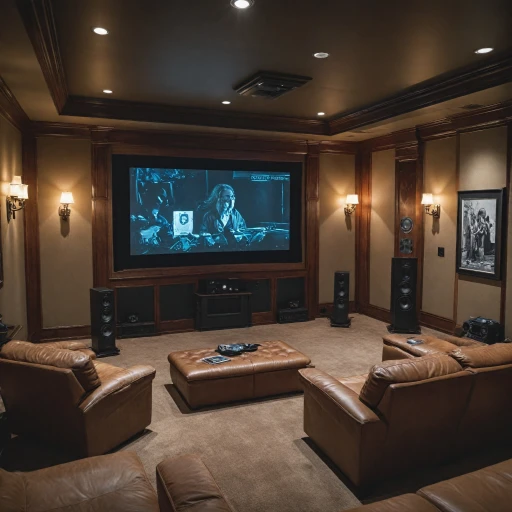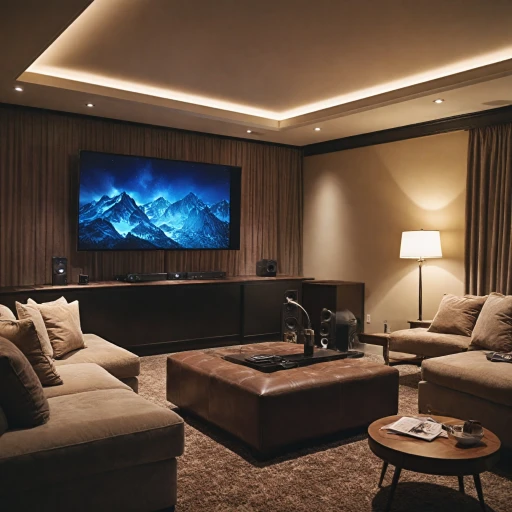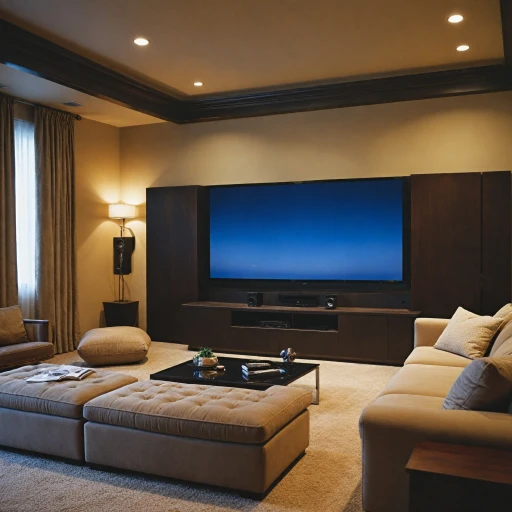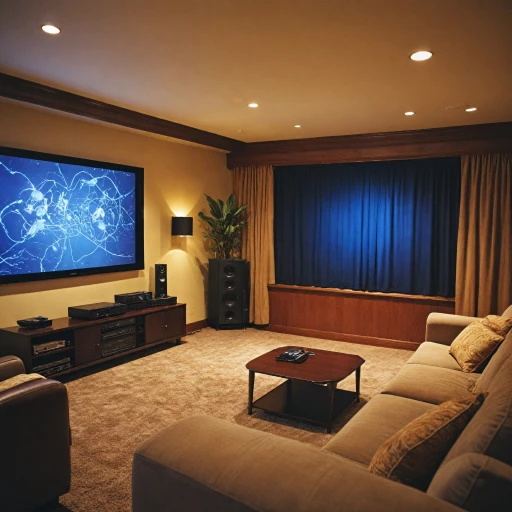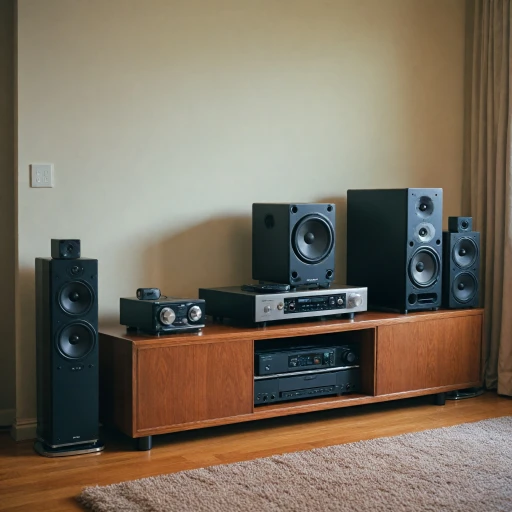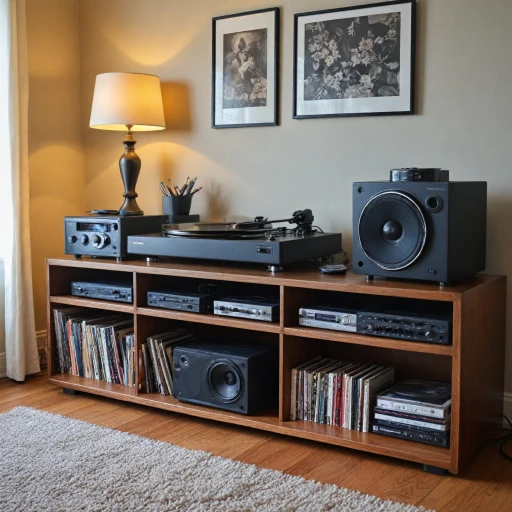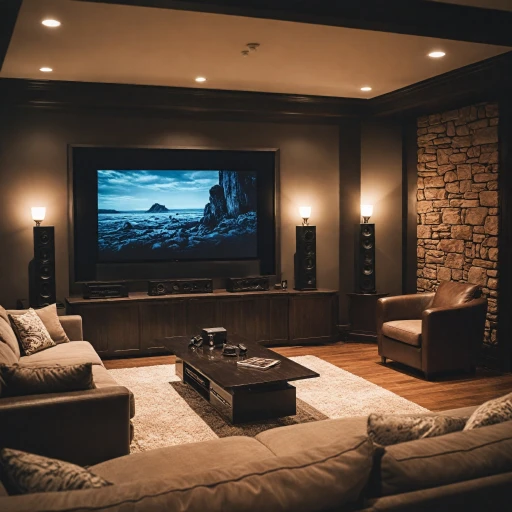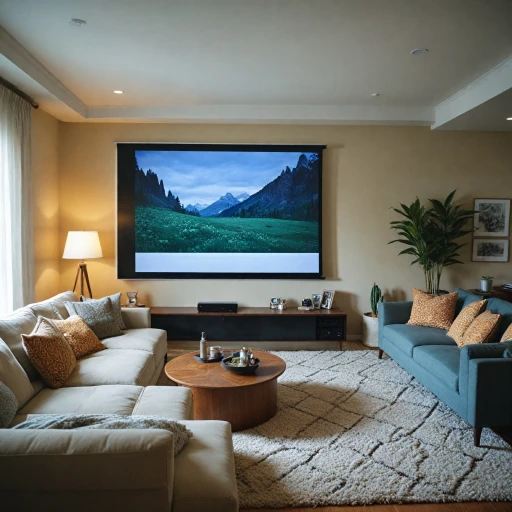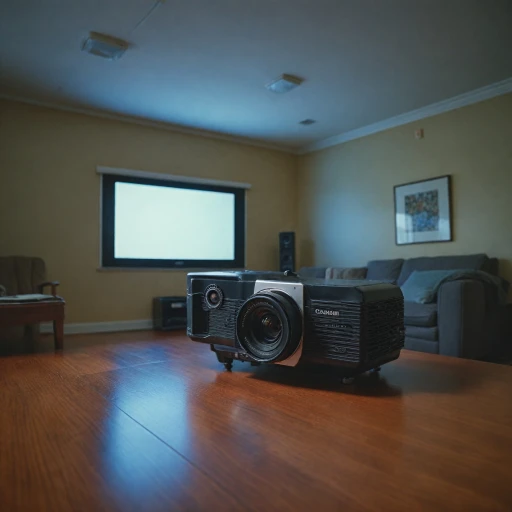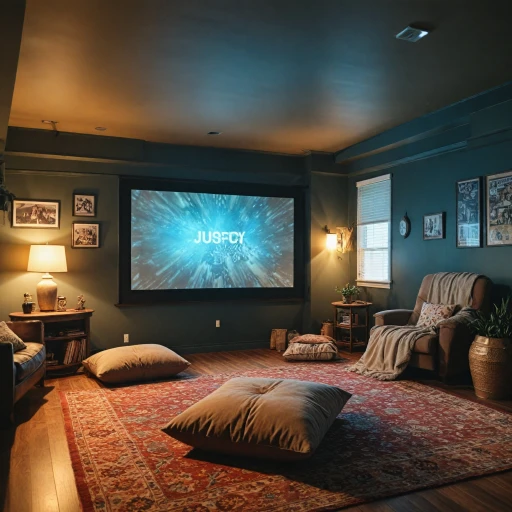
Understanding Ambient Light Rejecting Screens
Discovering the Advantages of ALR Technology
Ambient Light Rejecting (ALR) screens are a game changer in the world of home theater projection. When we dive into the realm of ALR screens, we uncover a powerful technology that specifically addresses a common issue faced by many projection enthusiasts: how to optimize viewing quality in a space that isn’t perfectly dark.
The primary function of an ALR screen is its ability to reject ambient light, such as room lighting or sunlight, that can wash out the image produced by a projector. This is achieved through the clever layering of specialized materials on the screen surface that selectively reflects the light from your projector back to the viewers, while deflecting unwanted ambient light from other sources.
What sets ALR screens apart from standard screens is this quality of light rejection, making it possible to maintain vibrant colors and deep contrasts even in well-lit rooms. The material composition of these screens, often featuring multi-layered fabric or innovative coatings, effectively makes them a must-have for anyone looking to enhance their viewing experience with essential projector accessories in a less controllable lighting environment.
Benefits of Using ALR Screens in Home Theaters
Advantages of Ambient Light Rejecting Screens in Home Theaters
When setting up a home theater, choosing the right screen is crucial for optimal viewing. Ambient Light Rejecting (ALR) screens offer several benefits that enhance the overall experience, especially in environments where controlling light is a challenge. Let's explore some of the key advantages of using ALR screens in your home theater setup.
- Improved Image Quality: ALR screens are designed to reject ambient light, ensuring that images projected onto the screen remain vibrant and clear. This is particularly beneficial in rooms that are not completely dark, as it prevents the washout effect often seen with traditional screens.
- Versatility in Lighting Conditions: Unlike standard screens, ALR screens perform well in a variety of lighting conditions. Whether you're watching a movie during the day or with lights on, these screens maintain excellent picture quality, making them a versatile choice for any home theater.
- Enhanced Contrast and Color Accuracy: By rejecting ambient light, ALR screens improve contrast and color accuracy, allowing for deeper blacks and more vivid colors. This results in a more immersive viewing experience, akin to what you might expect in a commercial cinema.
- Wide Viewing Angles: Many ALR screens offer wide viewing angles, ensuring that everyone in the room can enjoy a clear view of the screen without distortion or color shift. This is ideal for larger gatherings or family movie nights.
- Compatibility with Various Projectors: ALR screens are compatible with a range of projectors, including ultra short throw (UST) and short throw projectors. This flexibility allows you to choose the projector that best fits your space and budget.
- Durability and Longevity: Constructed from high-quality materials, ALR screens are built to last. They resist wear and tear better than traditional screens, ensuring that your investment will provide years of enjoyment.
For those looking to enhance your home theater experience with the perfect cinema screen frame, ALR screens offer a compelling option. With their ability to deliver superior image quality in various lighting conditions, they are an excellent choice for any home theater enthusiast.
Comparing ALR Screens to Traditional Screens
Traditional Screens vs. Modern ALR Screens
When evaluating a home theater setup, the choice between traditional and Ambient Light Rejecting (ALR) screens can greatly impact your viewing experience. Traditional screens serve well in controlled environments, where ambient light is strictly minimized. Conversely, ALR screens are expertly engineered to reject ambient light, optimizing performance even in areas with challenging lighting conditions. Traditional screens often struggle with image clarity and contrast when light is present. ALR screens, on the other hand, employ sophisticated technologies like specially designed materials or micro-alveolar structures to deflect ambient light. This enhances the overall image quality and maintains vivid colors and deep blacks, regardless of room lighting. In simpler terms, the light rejecting properties of ALR screens help ensure your projector's output remains as intended. Another key consideration is the viewing angle. Traditional screens can lose image brightness and contrast when viewed off-axis. With ALR screens, innovations in material composition provide a wider viewing angle, so guests seated anywhere in the room can enjoy the same high-quality picture. This superior performance often comes with a higher price, but the investment in an ALR projector screen can be well worth it for rooms that double as multifunctional spaces. Ultimately, the decision boils down to specific needs and room conditions. Those looking to enjoy the highest visual quality in a bright room will likely benefit from investing in an ALR screen, especially when paired with high-quality projectors like ultra short throw options. For more information on how to enhance your viewing experience, consider exploring how a subwoofer plate amplifier can tie your home theater system together.Choosing the Right ALR Screen for Your Space
Factors to Consider When Selecting Your ALR Screen
Choosing the right Ambient Light Rejecting (ALR) screen for your home theater involves several essential considerations to ensure you get the best viewing experience. With a variety of ALR screens available, narrowing down the options involves evaluating performance, compatibility, and budget.- Screen Size and Aspect Ratio: One of the first decisions is determining the size of your screen. While larger screens offer a more immersive experience, measure your space to avoid overpowering the room. Common sizes range from 100–120 inches, with 16:9 being the prevalent aspect ratio for HDTV content.
- Gain and Viewing Angle: Gain measures how well a screen reflects light back to the audience, affecting the brightness of your projected image. An ideal gain of around 1.0 to 1.3 provides a balance between brightness and viewing angle, ensuring clarity even at wider viewing angles.
- Throw Distance: Consider whether you'll be using short throw, ultra-short throw, or standard throw projectors. Your chosen ALR screen must complement the throw distance to prevent issues like shadow casting or distorted images.
- Material and Surface: ALR screen materials, like elite or clr, are specifically designed to reject ambient light. Look for those with surface textures that enhance light diffusion, particularly in rooms with higher ambient light levels.
- Screen Type and Mounting Options: Decide between fixed frame, motorized floor rising, or tab tension screens, based on your setup's aesthetics and functionality needs. Frame projector screens are popular for their sleek finish and ease of installation.
- Budget Considerations: Prices for ALR screens vary significantly. While some pricier elite screens offer advanced features, more affordable options can still provide substantial enhancement to your home theater. Check for sales or competitive offers from reputable brands to maximize value.
Installation Tips for ALR Screens
Proper Setup for Maximum Impact
Setting up an ALR screen can be a rewarding process that maximizes your viewing experience. Here are some essential tips and considerations to ensure a seamless installation:- Positioning the Screen: Ensure your ALR screen is correctly aligned with your projector. Whether you're using a short throw, ultra short, or traditional projector, the alignment should cater to your screen's specific gain and material properties to provide optimal ambient light rejection.
- Mounting Options: Depending on your setup preferences, choose between fixed frame or motorized options. Fixed frame projectors typically offer a more stable display, but a motorized floor rising or tab tension screen might be more suitable if you require flexibility.
- Frame Integrity: Ensure that the frame is robust and securely mounted. A well-maintained and correctly sized frame will keep the screen material taut, enhancing image clarity and minimizing light contamination.
- Consider Screen Size: Choose a screen size that complements your room's dimensions and the projector's throw distance. Popular options include inch projector screens designed for various mounting configurations. Larger sizes may involve a higher price point, so balance screen size with budget considerations.
- Ambient Light Conditions: Your ALR screen is designed to reject ambient light; however, optimizing the room's light conditions can significantly enhance the picture quality. Avoid direct light sources pointing at the screen or overly reflective surfaces.
Following these tips will not only facilitate a smoother installation process but also ensure that your ALR projector screen functions at its highest potential. By carefully considering the screen's interaction with your projector and room, you can create a dynamic and immersive home theater experience.
Maintaining Your ALR Screen for Longevity
Preserving Screen Performance and Longevity
Regular maintenance of your Ambient Light Rejecting (ALR) screen is crucial to ensure that it retains its performance and extends its lifespan. Here are some pointers that you can follow to maintain your ALR projector screen effectively.
- Dust and Debris Removal: Dust can settle on your screen over time, affecting the projection clarity. Use a soft, lint-free cloth or a microfiber cloth to gently wipe away dust from the screen surface. Avoid using abrasive materials as they can damage the screen's delicate material.
- Proper Cleaning Techniques: For stubborn stains or smudges, lightly dampen the cloth with water or a specialized screen cleaner. Make sure the cleaner is compatible with your screen material. Never use harsh chemicals or solvents, which can degrade the screen, leading to increased replacement costs.
- Frame and Structure Integrity: Inspect the fixed frame of your ALR screen regularly to ensure it's sturdy and securely attached. Frames can warp or become misaligned over time, affecting the screen’s ability to reject ambient light.
- Environment Control: Ensure your room environment is well-controlled. Excessive humidity or sunlight can affect both the screen and frame materials. Ideally, maintain a constant temperature and minimize exposure to direct sunlight.
- Regular Inspections: Periodically check for signs of wear such as fading, gain reduction, or material cracking. Early detection of these issues allows for timely repairs, helping you avoid the need for a complete replacement.
By following these straightforward maintenance tips, your ALR screen will continue to enhance your home theater experience for years to come, ensuring a crisp and clear image from your projector—be it an ultra short throw, short throw, or any other type. Whether you have a motorized floor, tab tension, or fixed frame setup, regular upkeep is a savvy investment. Opting for high-quality screens like Elite Screens or other reputable brands may also reduce long-term costs associated with repairs or replacements, thanks to their durable materials and construction.
